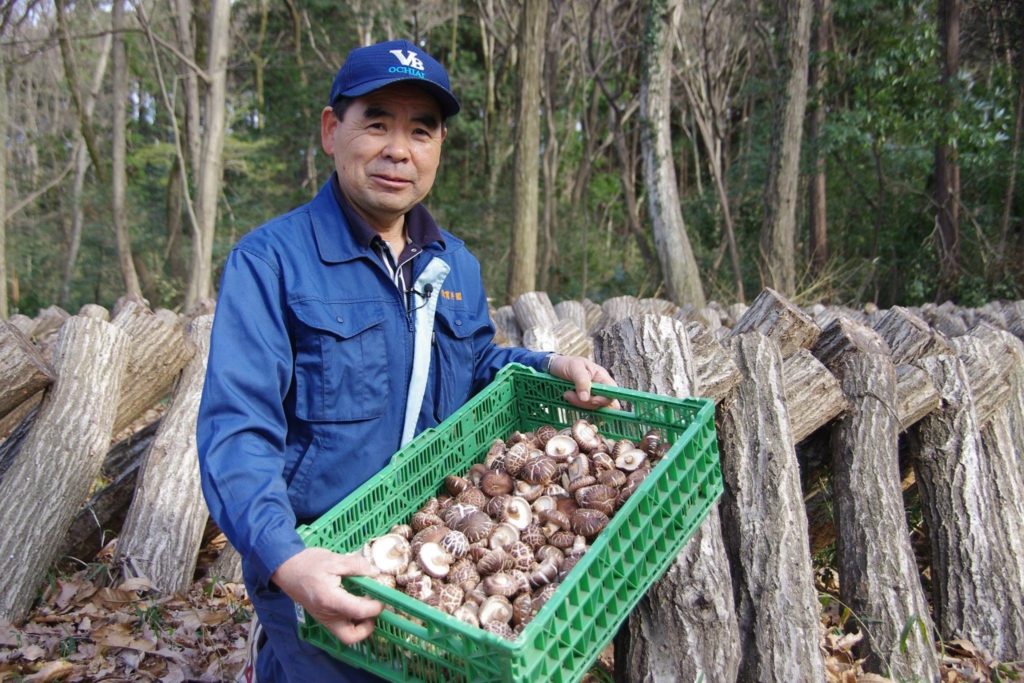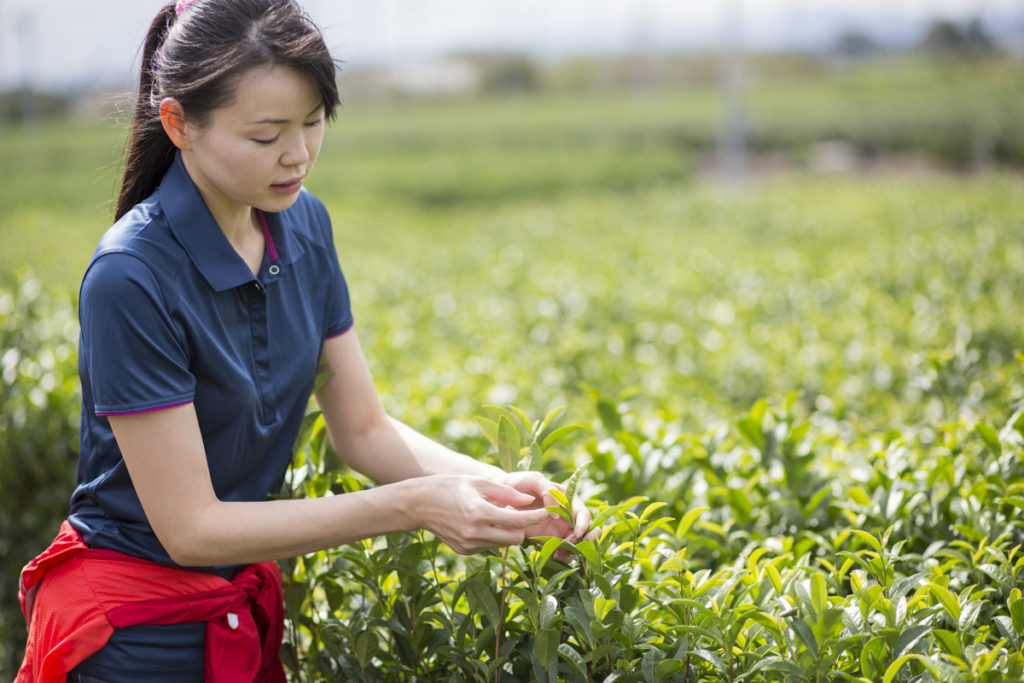Our farm is located in the same beautiful hilly forest as featured in Hayao Miyazaki’s Totoro, just 70km to the northwest of Tokyo.
Our farm is located in the same beautiful hilly forest as featured in Hayao Miyazaki’s Totoro, just 70km to the northwest of Tokyo.
ur shiitakes, which have been awarded the Japanese Fish and Forest Agriculture Minister’s Prize a number of times, have the thickest and densest caps that have a truly outstanding bite.
The majority of today’s commercial shiitake production in Japan and China (around 80% of the annual yearly production of Japan) is grown on wood shavings compacted with shiitake mycelium mixed with nutrients to stimulate their growth.
However, Nukui-en shiitakes are exclusively produced in forests using the traditional Genboku-Saibai method. Dead hardwood branches are cut to 1-meter lengths and weigh anywhere from 4 to 20kg. Holes are then drilled in the branches to fit the mushroom mycelium, and the branches are then soaked and set out in forests as seen in the photo. Using this method, two harvests of shiitakes can happen each year without fertilizing. Our work is hardly mechanized. Branches that stop producing shiitakes are left in the soil, which coincides with agroforestry principles.
My family also produces tea in the Sayama fields in the Saitama region. Sayama is considered one of the three best areas for green tea in Japan, and after many centuries its production has been modest in comparison to the other two (Shizuoka and Uji).
Sayama teas are overall known for their unique, strong taste. This stems from the unique production methods behind Sayama green tea. Another special element of their production is the fact that families, such as Nukui-en, assume both production and retail responsibilities to ensure quality. This is quite rare in Japan today.

